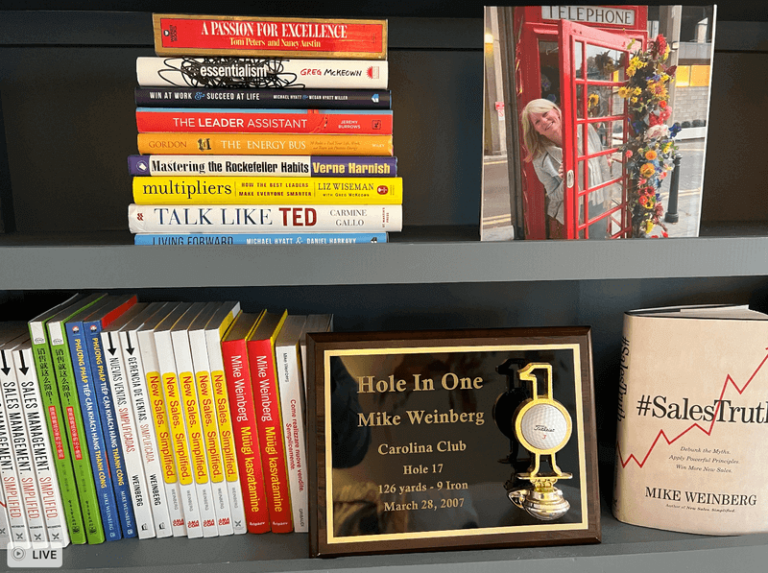I hope your Fall 2017 Selling Season is off to powerful start. Like you, I am running hard to maximize impact during this critical time of year and I’m sure that many of you fellow road warriors can relate. I’ve been on so many planes and in so many hotels recently that it’s been difficult remembering where I parked at the airport or which hotel room I’m in. Sorry it’s been so long since I’ve posted anything.
In the past two weeks I’ve led meetings for three very different companies in three very different locations with three very different businesses: in Munich for an executive team meeting of a high-tech global company; on the west coast of the U.S. with a large business development team for a company that I’m prohibited from sharing anything more about; and in heart of the industrial midwest for an old-economy manufacturing company. The three meeting locations, the three company cultures, the three company histories, the backgrounds of the sales teams, the style of executives, and the nature of what they sold Could. Not. Have. Been. More. Different. Said differently, there was nothing similar and nothing in common about any of these organizations. Except…
Except that each of these companies was experiencing almost identical sales issues, caused (in my opinion), by the same challenges.
1. The sales team was not focused on a finite strategic list of target accounts (including both growable existing customers and ideal profile prospects) that they were absolutely committed to proactively pursuing.
2. Their messaging (“sales story”) was focused much more on their products and services rather than the issues they addressed for customers (problems solved, pains removed, opportunities captured, improved results)…the outcomes they achieved.
3. The salespeople spent a pathetically low percentage of their time actually selling compared to the amount of time they were either babysitting/over-servicing accounts, putting out fires, or doing administrative and internal corporate work.
The bad news? These are VERY common sales challenges that have VERY BAD consequences. When individual sellers or sales teams aren’t proactively working strategic target customers, they either miss opportunities, or end up arriving late to the party to encounter prospects who are already shopping and often having their buying criteria shaped by the competitor’s more proactive salesperson who wasn’t waiting around for a warm lead. This is one of the most deadly and most common sales issues today. Worst case is that we completely miss out on an opportunity. Not too far behind is the second-worst case where we end up coming across as nothing more than a vendor quoting a price (column fodder) who gets commoditized because it’s really really really hard to be perceived as the expert/consultant/value-creator when you’re last to the table.
Compound that first challenge with issue #2 above where the salesperson is not only late to the opportunity, but when they get there, instead of their messaging/story being focused on the customer’s issues/needs/desires, they make their product/service the focus of their lame, self-focused pitch which further relegates them to nothing more than vendor/product-pitcher status.
And do I even need to expound upon issue #3 above? I didn’t think so. I’m continually amused that I get brought into companies to help identify sales issues and train the sales team to be more effective at developing new business only to find that very often The. Single. Biggest. Issue. preventing salespeople from acquiring more new business is that they spend a shockingly low percentage of their time working to develop new business. Yes, I just wrote that. And, yes, I actually get paid to point that very deep and complex observation out to sales managers and senior executives.
The good news? The fixes for these sales challenges don’t require a new corporate strategy or a massive reorganization, or someone with a PhD. To fill the pipeline with fresh sales opportunities and begin to execute a successful new business development-focused sales attack, you (or your salespeople) need:
- A strategic, workable, finite list of growable accounts and/or ideal profile prospects that you/they are 100% committed to proactively working – Chapters 4 & 5 in New Sales. Simplified.
- A higher percentage of the calendar dedicated to actually selling. (In case that came across as so simplistic that it didn’t sink in, please re-read it. To sell more it really helps to spend more time selling. Feel free to quote me on that one!) – Chapter 14 in New Sales. Simplified.
- A compelling, succinct, customer-issue (outcome)-focused, differentiating “sales story” (message) – Chapters 7 & 8 in New Sales. Simplified.
Please stop believing that your sales challenges are so unique. I promise you with 95% certainty that they are not. I have the most eclectic group of clients that range from a just a few million dollars in sales to many, many billions. These companies are in completely unrelated industries with very different offerings, sales cycles, pricing schemes and salespeople. Some sell to governments, some sell to printers, some sell to CIOs of Fortune 100 companies. Some call on shop floor maintenance managers, some on procurement, other on engineers and others on CFOs. Let’s stop looking for magic bullets or highly complex solutions to what are typically relatively simple challenges. Sales is simple and people who tell us how complicated it is are either confused themselves or using that complexity as a smokescreen to hide their lame effort or excuse their poor results.



